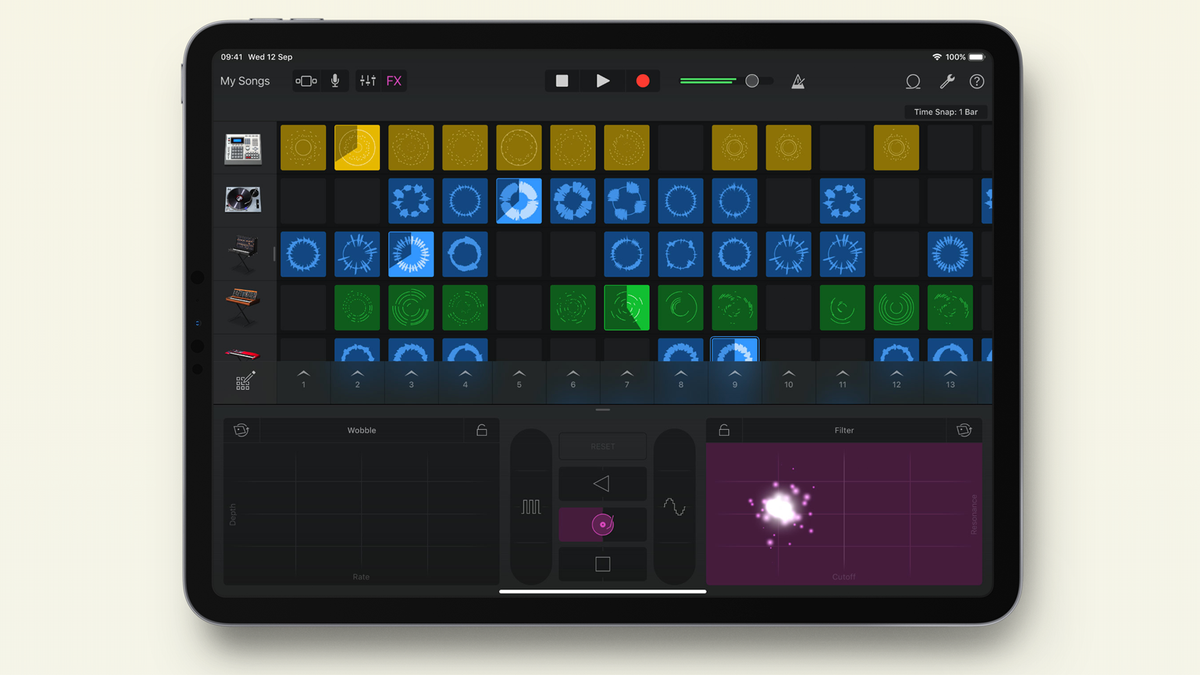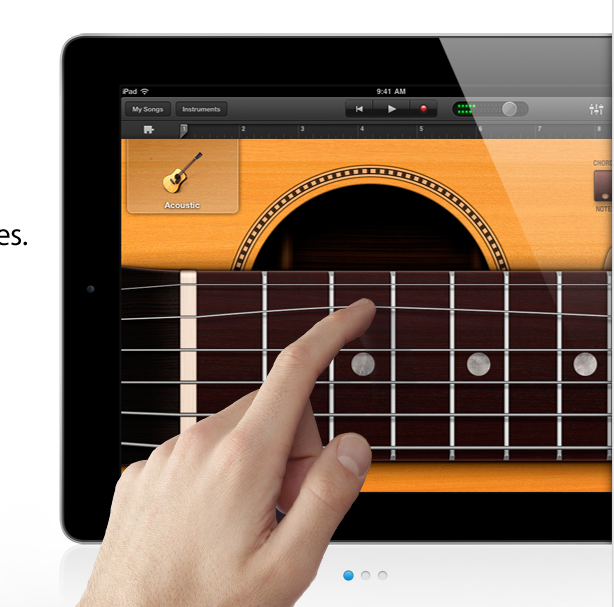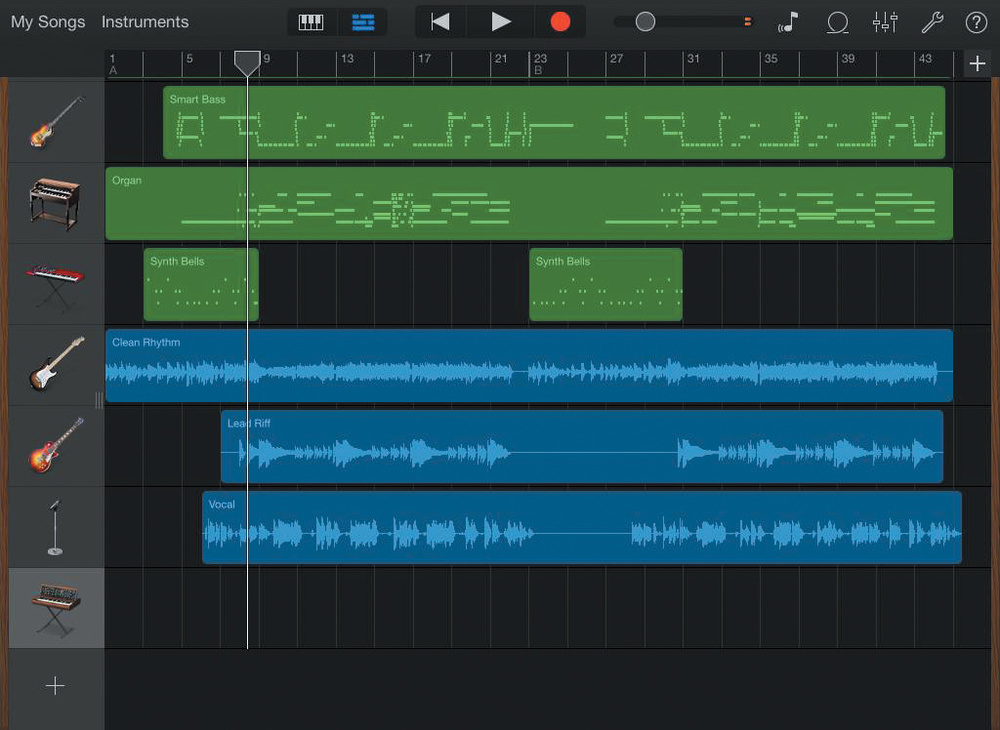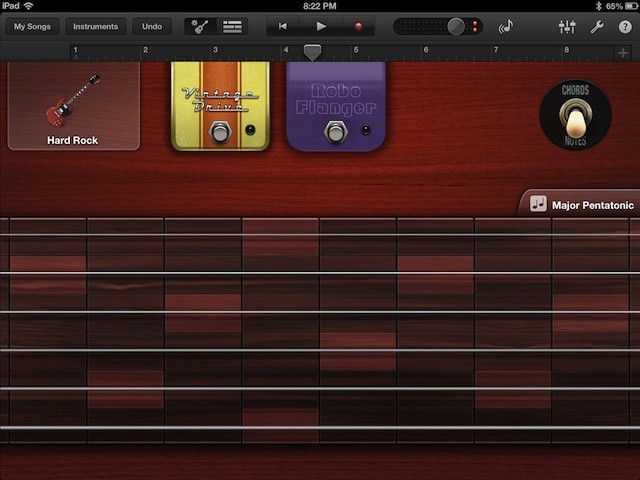

- #Apple garageband guitar cable driver
- #Apple garageband guitar cable pro
- #Apple garageband guitar cable software
First, you could add the iRig and its software partner-in-crime, Amplitube, to your tour supplies.
#Apple garageband guitar cable pro
Ease of use wasn't lost when we connected to GarageBand on a MacBook Pro either, as our experience was just as painless as our slate recording session.Īs far as guitar adapters for the iPad and iPhone go, there are a couple of other options that we've already mentioned and they could save you some dough as well. Connecting with the adapter was pretty simple, just plug in and play for the most part, adjusting settings in each app or on the axe itself as you go. We also took the Apogee Jam for a spin with AmpKit, the software portion of Peavey / Agile Partner's guitar connector, the AmpKit LiNK. The adapter works great with GarageBand and with Amplitube, the recommended app for the iRig guitar adapter. Sure, we'd like to see some proprietary software, especially with the $99 price tag, but device compatibility makes up for this to some degree. In this case, use the device’s own volume control.Apogee recommends that you use its guitar adapter with Apple's GarageBand - either the app for the iPad / iPhone or the desktop version that comes standard on a Mac. If the Recording Level slider is dimmed, you can’t change the input volume in GarageBand. Choose a mono input for monophonic instruments (with a single channel), and choose a stereo input for stereo instruments (with a pair of channels).ĭrag the Recording Level slider to change the input volume level for the sound source. If the audio interface channels don’t appear in the menu, choose GarageBand > Preferences, click Audio/MIDI, then choose the audio interface from the Audio Input pop-up menu. If the guitar is connected to an audio interface, choose the channel number for the microphone. If the guitar is connected to a USB port, choose the microphone.

If Built-in Input doesn’t appear in the menu, choose GarageBand > Preferences, click Audio/MIDI, and choose Built-in Input from the Audio Input pop-up menu. If the guitar is connected to your computer’s audio input port, choose Built-in Input. In the Recording Settings section, choose one of the following from the Input pop-up menu:

To increase the input signal, you can connect the guitar to a preamplifier, and connect the preamplifier to your computer.Ĭlick the Smart Controls button to open the Smart Controls pane, then click the Inspector button.
#Apple garageband guitar cable driver
Follow the manufacturer’s instructions, which might include installing the correct driver on your computer.Ĭonnecting an electric guitar to your computer’s audio input port may result in a low-level input signal. Also make sure the audio interface uses a format supported by your computer. If you connect an electric instrument to an audio interface, check the manufacturer’s specifications to make sure the interface is compatible with OS X and Core Audio. Choose Built-in Input as the track’s input source.

If your computer has an audio input port, connect an electric guitar to the audio input port using an adapter cable. Connect an audio interface to your computer’s USB or FireWire port, then connect an electric guitar to the audio interface.Ĭonnect the electric guitar to a channel on the audio interface or the adapter cable, using a standard 1/4-inch tip-sleeve instrument cable.


 0 kommentar(er)
0 kommentar(er)
